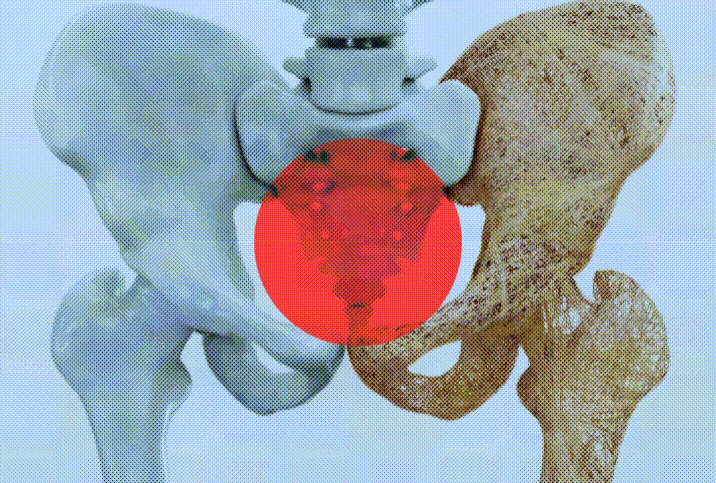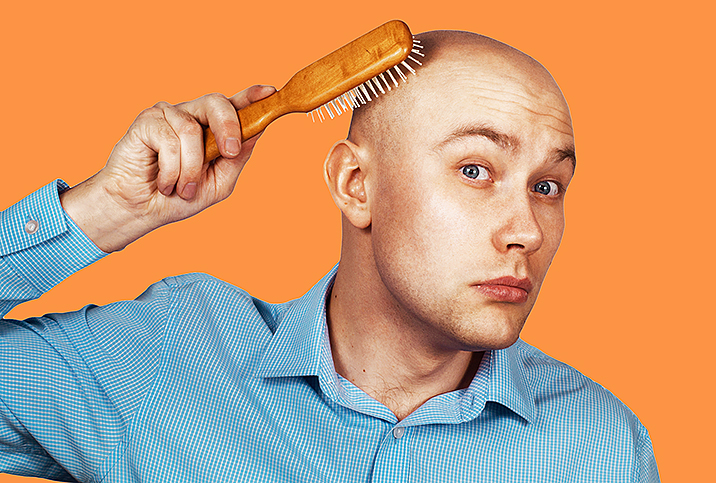What Happens to Men's Bodies After 50, And What to Do About It

Happy birthday! You're 50 years old, so welcome to noticeable changes in your hormone levels, bone density, muscle mass, eyesight, hair, cognition, immunity and more.
"Men increasingly notice the worsening of symptoms that started in their 40s," said Jerry Bailey, an acupuncturist, chiropractic and functional medicine physician at Lakeside Holistic Health.
But what do these changes mean for you?
In this article, we discuss what happens to men's bodies at 50, and included a few tips to help you keep in the best shape possible.
Men's testosterone continues to decrease after 50
Bailey said once you reach your 50s, you begin to see a severe decline in testosterone levels and a significant increase in estrogen levels.
"This results in fat deposition, breast development, and worsening brain function," he explained.
The debate about why and how your testosterone decreases with age is ongoing. Some professionals, like Bailey, theorize it's because of lifestyle changes.
"These issues are related to the foods we eat, the alcohol we ingest, the deep sleep we do not get and the lack of exercise in our daily lives," Bailey said. "Men often feel they have 'earned' the ability to rest on their laurels at this age. But this is far from the truth."
However, according to the Urology Care Foundation, the free testosterone levels in your blood naturally decrease with age, too. Basically, you get hit with a double whammy. An article published in the journal Clinical Interventions of Aging reported that free testosterone levels fall by 2 to three 3 per year. The authors theorize this is largely due to the association between aging and increasing sex hormone-binding globulin levels.
"For those men who are 50 years old and above, decreased libido due to changes in testosterone levels becomes a concern," advised Alexander Zuriarrain, M.D., a quadruple board-certified plastic surgeon with Zuri Plastic Surgery and fellow of the American College of Surgeons. "If you feel fatigued, lack interest in sex, or have increased erectile dysfunction, it could be time to consider medical help and investigate your testosterone levels."
If you're looking for natural ways to promote health and well-being, Bailey recommends looking at your daily habits and taking control of them to help prevent long-term lifestyle-related diseases. His top tips for longevity are to:
- Eat a whole-food, paleo-Mediterranean style diet. Avoid highly processed packaged foods, pro-inflammatory fats and those foods that come ready-made in a box, bag or can.
- Get eight hours of sleep per night. If inclined, you can even take this one step further and track those rest markers with a biometric tracker—yes, there’s an app for that.
- Add in strength training to build muscle and lean mass to boost metabolism.
"If you haven't started by age 50, there is no better time than now to start, Bailey said. “You can reverse age and increase your health and longevity with those simple, yet highly effective, steps.
Your breasts may grow larger after 50
"In this age group, gynecomastia is more prevalent," Zuriarrain said. "This is typically due to the increased amount of body fat and hormonal changes that occur in the male chest and body."
Gynecomastia is a condition characterized by an increase in breast gland tissue caused by an imbalance of estrogen and testosterone. At least 30 percent of males will be affected during their lifetime, and the prevalence in men ages 50 to 80 is between 24 percent and 65 percent. Some theories credit this to increased body fat with aging: Adipose (fatty) tissue plays an essential role in regulating and metabolizing sex hormones.
Most men will not experience symptoms but can feel embarrassed by the increase in breast tissue. Other complications can include:
- Swelling and tenderness in the breast area
- Increased nipple sensitivity
- Pain in the breast area
Ae, obesity and hormone imbalance are three causes of gynecomastia, which is why it's a more common occurrence in men's bodies at 50 and older.
"Men will notice an increase in fatty tissue typically around the love handles and the chest area," Bailey said. "The reduction in testosterone and increase in body fat can lead to excess breast tissue growth."
If you're concerned about breast tissue growth or are experiencing pain, swelling or discomfort in the breast area, your best strategy is to consult your family doctor. Most men don't require treatment but options are available. Some medications can address the hormone imbalance that's causing breast growth. Your doctor might recommend surgery to remove the breast fat or tissue in severe cases.
Addressing male-pattern baldness
"Hair loss is much more common and continues to be a problem throughout advanced age," Zuriarrain stated. The National Institute of Health reports that more than 50 percent of men over 50 have some degree of hair loss.
The official term for hereditary hair loss is androgenetic alopecia. In men, it is referred to as male-pattern baldness. This type of hair loss typically occurs later in life due to genetics, aging and hormones. However, researchers also state that there may be a link between male pattern baldness and other medical conditions, such as coronary heart disease and prostate enlargement.
Hair loss is different for everyone. You might feel comfortable with it, in which case, you don't need any treatment. But if hair loss, and worrying about it, is impacting your mental health and self-esteem, there are some medical treatment options available including:
- Medication, such as finasteride or dutasteride
- Topical treatments, such as minoxidil
- Over-the-counter shampoo treatments
- Hair transplantation
- Laser or light therapy
Because of the suggested link between cardiovascular disease, diabetes, prostate enlargement and hair loss, a healthy lifestyle is a positive management method. Eating a nutritious diet, getting plenty of exercise and avoiding excessive alcohol may help reduce risk.
Men over 50 are at increased risk of orthopedic injury
Zuriarrain noted that decreased bone density in your 50s can increase the risk of orthopedic injury.
This is tied to osteoporosis, where bones become less dense and weaker. As we age, more bone is broken down than is replaced by new bone, which causes the bones to be more fragile—and fragile bones are more likely to break.
Due to menopause speeding up bone density loss in women, people often talk about osteoporosis as a woman's disease. However, roughly 1 in 4 men over age 50 will break a bone due to osteoporosis. According to the Bone Health and Osteoporosis Foundation, men older than 50 are more likely to break a bone due to osteoporosis than to get prostate cancer.
Fortunately, osteoporosis is manageable. Treatment options include:
- Bisphosphonates (like alendronic acid) to maintain bone density.
- Selective estrogen receptor modulators that help maintain bone density and reduce the risk of fracture.
- Bisphosphonates, which stimulate cells to create new bone mass.
- Calcium and vitamin D supplements.
- Testosterone treatments, if osteoporosis is caused by low testosterone levels.
The National Osteoporosis Foundation also recommends that men after 50:
- Eat a healthy diet and exercise regularly to help slow the loss of bone mass.
- Get the recommended amount of calcium and vitamin D every day from your diet and/or supplements.
- Have a bone density test to diagnose osteoporosis and repeat this every 1 to 2 years—as advised by your family doctor—to monitor if your osteoporosis medication is working.


















